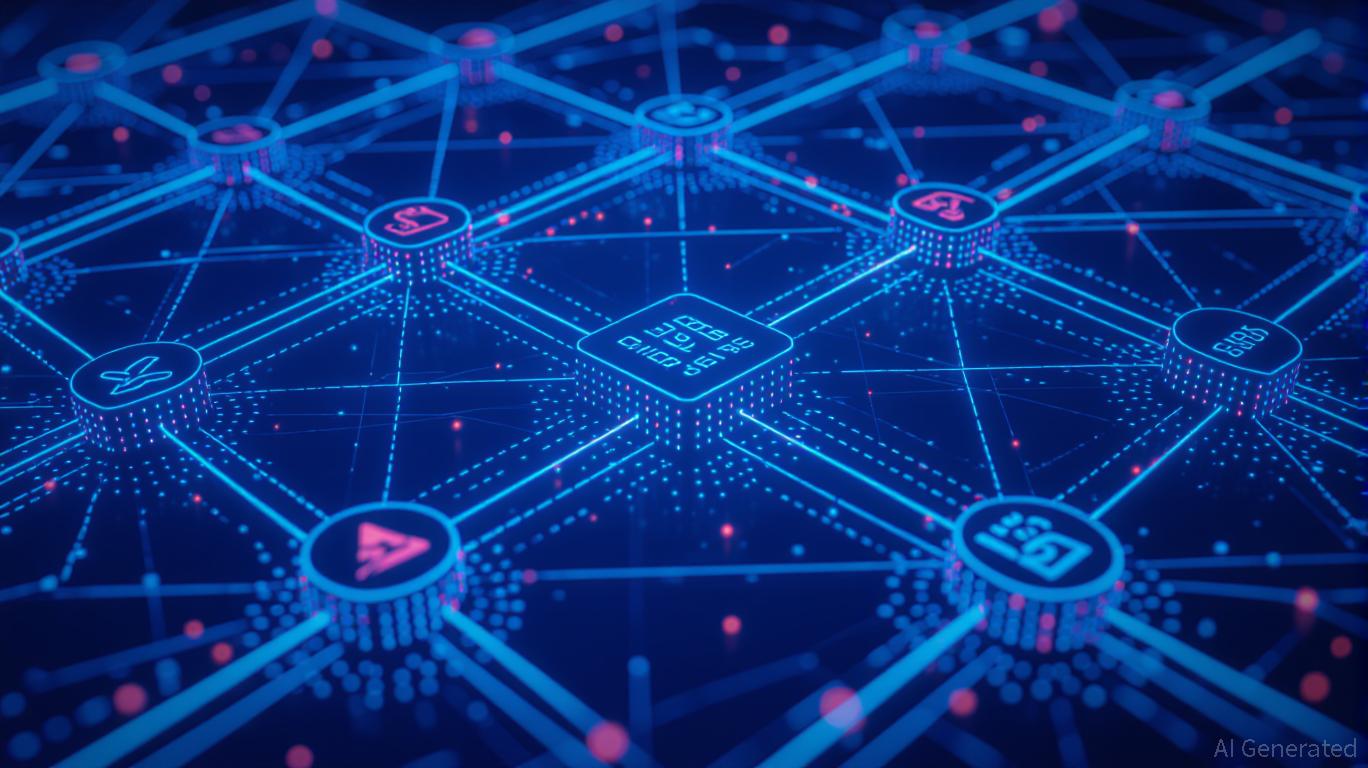Yen-backed Stablecoin Initiative May Challenge the Dollar’s Leading Role in Digital Finance
- JPYC, Japan's yen-pegged stablecoin issuer, plans to allocate 80% of 10-trillion-yen token proceeds to JGBs, aiming to fill gaps left by BOJ's stimulus tapering. - The strategy could reshape Japan's bond market as BOJ reduces its 50% JGB ownership stake, with JPYC CEO predicting global adoption of stablecoin-driven government bond demand. - Japan's FSA supports innovation through sandbox programs, including a pilot with major banks , while regulators warn stablecoins might divert funds from traditional b
The issuer behind Japan’s JPYC stablecoin is setting its sights on becoming a key force in the nation’s government bond sector, unveiling plans to make substantial investments in Japanese government bonds (JGBs) to support its yen-linked digital currency. The firm intends to release stablecoins worth 10 trillion yen (approximately $66.32 billion) over the next three years, with 80% of the funds directed toward JGBs and the remaining 20% placed in bank deposits, guaranteeing that tokens can always be exchanged for yen, according to
Noritaka Okabe, CEO of JPYC, believes that stablecoin providers could step in to fill the void left by the BOJ’s reduced bond buying, emerging as major purchasers of JGBs as interest in yen-based digital assets rises. “Authorities might attempt to regulate the types of bonds stablecoin issuers acquire, but controlling the total amount they hold would be difficult,” Okabe remarked, adding that this development “will be seen globally,”

Nonetheless, there are hurdles to overcome. Policymakers have expressed worries that stablecoins might draw funds away from traditional banks, potentially weakening their role in international payment networks, as mentioned in the
Looking forward, JPYC may transition from focusing on short-term JGBs to longer-term bonds if yields remain favorable and investor interest increases, as reported in
Disclaimer: The content of this article solely reflects the author's opinion and does not represent the platform in any capacity. This article is not intended to serve as a reference for making investment decisions.
You may also like
ZK Atlas Enhancement: Transforming Blockchain Expansion and the Next Era of DeFi
- ZKsync's ZK Atlas Upgrade (Oct 8, 2025) addresses blockchain scalability and interoperability via modular Layer 2/3 infrastructure. - Achieving 15,000 TPS with RISC-V Airbender prover, it enables near-zero fees and direct Ethereum liquidity access, enhancing DeFi adoption. - ZK token surged 50% post-upgrade, while projects like Grvt raised $19M to leverage its infrastructure, signaling institutional confidence. - Challenges include regulatory uncertainties and legacy system integration, though modular de

The Rapid Rise of ZK Technology: Could This Spark the Upcoming Crypto Bull Market?
- Zero-knowledge (ZK) technology addresses blockchain scalability via ZK rollups, enabling 43,000 TPS and 90% lower costs, as seen in ZKsync and StarkNet upgrades. - Institutions like Deutsche Bank and Sony adopt ZK-based solutions for confidential settlements and rights management, reducing gas costs by 70% for institutional transactions. - ZK rollups drive a $90B Layer 2 market by 2031, with StarkNet’s $72M TVL growth and venture capital inflows signaling institutional validation and commercial viability

Astar 2.0: Transforming Blockchain Foundations and Its Impact on DeFi
- Astar 2.0 enhances blockchain scalability via Polkadot's async protocol, achieving 150,000 TPS and 6-second block times. - Strategic partnerships with Sony , Mazda, and Japan Airlines expand real-world use cases beyond DeFi, including AI logistics and blockchain rewards. - A $3.16M ASTR purchase by a major investor in 2025 highlights growing institutional confidence in Astar’s hybrid infrastructure. - Analysts project ASTR could reach $0.80–$1.20 by 2030 if key upgrades and enterprise adoption milestones

Fed Focuses on Controlling Inflation Rather Than Boosting Economic Growth
- The Boston Fed urges delaying rate cuts until inflation nears 2% target, citing risks of premature easing in a still-inflationary environment. - Atlanta Fed's Bostic emphasizes inflation as the "clearer and more urgent risk" over labor market signals, reflecting hawkish policy divisions. - Fed officials consider resuming asset purchases post-October rate cut to maintain liquidity while avoiding inflationary spikes from tariffs. - Policy balancing act emerges: rate cuts could stimulate growth but risk rei